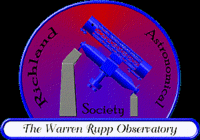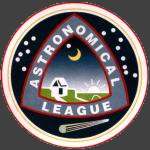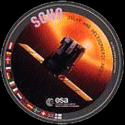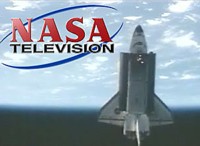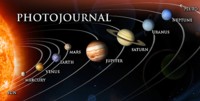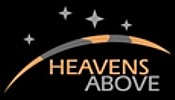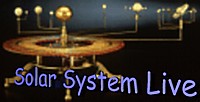Fall/Winter 2009

Previous Editions of the M111:
M111 Fall 07
M111 Late Fall 07
M111 Dec 2007
M111 Jan 2008
M111 April 2008
June/July 2008
August 2008
September 2008
October 2008
December 2008
February 2009
M111 Spring 2009
M111 Summer 2009
Greetings...
Welcome all ye weary travelers to a new type of M111... "On Line"! Thanks to the magic of the internet, it's now easier than ever to keep up a quarterly newsletter. The only thing that isn't easy is getting new content! Any time you have something you'd like to offer - be it a story of how you first got started in astronomy, a star party you just attended, a telescope you just bought, or your favorite constellation, just drop me a line with the story included and I'll be sure to get it posted!
In the meantime, I do my best to make sure everyone is aware of our newsletter. If for some reason you need a hardcopy and cannot print one yourself, please feel free to contact me at 419-845-2629 and I will be happy to send you one via regular postal mail. As always, if you have something to contribute? Let me know!
Back to top...
Words From Da' Prez
 Greetings, Fellow RAS Members!
Greetings, Fellow RAS Members!
WOW! What an incredible November closing night! We simply could not have asked for more beautiful weather conditions, or such a wonderful crowd. This year the Observatory has seen record setting attendance and we cannot thank all of our guests enough for joining us and making everything so lively and so much fun! We hope that you'll continue to enjoy astronomy throughout the Winter months.
Once again, thanks to everyone in the Club who made this year's 2009 Public Nights a wonderful success, and to all of our guests for their generosity and support. We couldn't do it without YOU! Our membership gave programs at Caskey's Campground, Pier Leon and Lowe-Volk Park. They were giving outreach to neighbors, friends and family members! We journeyed to schools, camps and scouting events... We gave a "100 Hours of Astronomy Program" and partcipated in "Earth Hour". What a wonderful way to share the International Year of Astronomy! And what a wonderful group of friends... As we end the year, think of all the great things you've done and all we have to look forward to!
 Just in case you didn't get a chance to attend our annual "Haunted Star Party", you missed a real treat! We don't know where this thing came from, but it was definitely one of the creepiest, spookiest things present! Believe it or not, the skies would clear periodically and we had a great time cooking out, setting fire to local vegetation and just laughing a lot! We hope you'll join us again next year.... Until next time?
Just in case you didn't get a chance to attend our annual "Haunted Star Party", you missed a real treat! We don't know where this thing came from, but it was definitely one of the creepiest, spookiest things present! Believe it or not, the skies would clear periodically and we had a great time cooking out, setting fire to local vegetation and just laughing a lot! We hope you'll join us again next year.... Until next time?
Keep rockin' the night away! ~Tammy
Back to top...
Staring At Lightning
There's something mesmerizing about watching a thunderstorm. You stare at the dark, dramatic clouds waiting for split-second bursts of brilliant light intricate bolts of lightning spidering across the sky. Look away at the wrong time and (FLASH!) you miss it.
Lightning is much more than just a beautiful spectacle, though. It's a window into the heart of the storm, and it could even provide clues about climate change.
Strong vertical motions within a storm cloud help generate the electricity that powers lightning. These updrafts are caused when warm, moist air rises. Because warmth and lightning are inextricably connected, tracking long-term changes in lightning frequency could reveal the progress of climate change.
It's one of many reasons why scientists want to keep an unwavering eye on lightning. The best way to do that? With a satellite 35,800 km overhead.
At that altitude, satellites orbit at just the right speed to remain over one spot on the Earth's surface while the planet rotates around its axis a geostationary orbit. NASA and NOAA scientists are working on an advanced lightning sensor called the Geostationary Lightning Mapper (GLM) that will fly onboard the next generation geostationary operational environmental satellite, called GOES-R, slated to launch around 2015.
"GLM will give us a constant, eye-in-the-sky view of lightning over a wide portion of the Earth," says Steven Goodman, NOAA chief scientist for GOES-R at NASA's Goddard Space Flight Center. Once GLM sensors are flying on GOES-R and its sister GOES-S, that view will extend 18,000 km from New Zealand, east across the Pacific Ocean, across the Americas, and to Africa's western coast.

The Geostationary Lightning Mapper (GLM) on the next generation of GOES satellites will detect the very rapid and transient bursts of light produced by lightning at near-infrared wavelengths. This image was taken from the International Space Station and shows the Aurora Australis and lightning.
With this hemisphere-scale view, scientists will gather an unprecedented amount of data on how lightning varies from place to place, year to year, and even decade to decade. Existing lightning sensors are either on the ground which limits their geographic range or on satellites that orbit much closer to Earth. These satellites circle the Earth every 90 minutes or so, quickly passing over any one area, which can leave some awkward gaps in the data.
Goodman explains: "Low-Earth orbit satellites observe a location such as Florida for only a minute at a time. Many of these storms occur in the late afternoon, and if the satellite?s not overhead at that time, you're going to miss it."
GLM, on the other hand, won't miss a thing. Indeed, in just two weeks of observations, GLM is expected gather more data than NASA's two low-Earth orbiting research sensors did in 10+ years.
The new data will have many uses beyond understanding climate change. For example, wherever lightning flashes are abundant, scientists can warn aircraft pilots of strong turbulence. The data may also offer new insights into the evolution of storms and prompt improvements in severe weather forecasting.
Staring at (FLASH!) Did you miss another one? The time has come for GLM!
Want to know how to build a weather satellite? Check the 'how to' booklet at scijinks. gov/weather/technology/build_satellite.
This article was provided by the Jet Propulsion Laboratory, California Institute of Technology, under a contract with the National Aeronautics and Space Administration.
Back to top...
Jupiter's Dueling Red Spots
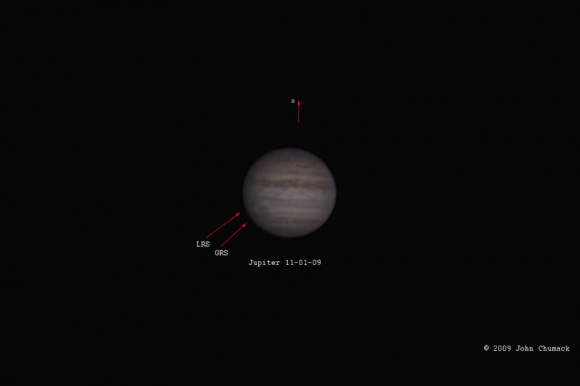
Even though most of us have been suffering from poor seeing conditions due to both hemisphere's seasonal climate changes, the changes we're experiencing look like nothing compared to what's happening on Jupiter. If you think we've got turbulent atmosphere and more than our fair share of clouds - then check out what John Chumack's been watching!
"I captured Jupiter last night (7:45pm EST on 11-01-09) from my backyard in Dayton, but the seeing was rather poor....but I did notice that the Great Red Spot had Company...the Little Red Spot has gotten noticeably redder and is now very close to the GRS."
Of course, we all know the Great Red Spot is a great anti-cyclonic (high pressure) storm similar to our terrestrial hurricanes, but it is enormous. Three Earths would fit within its boundaries! And we also know this huge storm has persisted for at least the 400 years that we humans have observed it through telescopes. But in all that time, has it ever collided with another storm front?
Because the GRS can never occur over a land mass and the fact that it is driven by Jupiter's internal heat source may be why it has hung around for so long. Thanks to some far reaching computer simulations, astronomers believe such large disturbances may be a stable feature of Jupiter, and that stronger disturbances tend to absorb weaker ones. Has the GRS consumed smaller anti-cyclones in its past and that is why is is so big? Is it about to do it again?
Since the cometary collision that created the "Great Black Spot" in July of this year occurred, many observers and photographers have been keeping an eye on Jupiter's activity. Says John, "Since July they seem to have been getting closer together and may eventually collide....it will be fun watching to see which one survives the duel!!!"
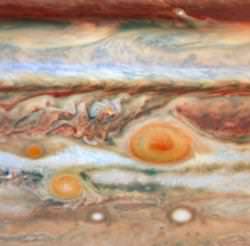 In 2006, Oval BA, also known as "Red Jr.," sideswiped its huge companion - just as it does about every two years. Chances are good that when the two meet, the smaller of the pair will end up losing its ruddy tones - the larger storm slowing Oval BA's spin and possibly reversing the process that reddened it in the first place. Will it pull up even more material from below Jupiter's surface? Or will it disperse what's already there? No one knows for sure... But what we do know is that when a third "Red Spot" passed between the two in 2008... and it didn't survive the interaction. Need to know when to watch? Then take this:
In 2006, Oval BA, also known as "Red Jr.," sideswiped its huge companion - just as it does about every two years. Chances are good that when the two meet, the smaller of the pair will end up losing its ruddy tones - the larger storm slowing Oval BA's spin and possibly reversing the process that reddened it in the first place. Will it pull up even more material from below Jupiter's surface? Or will it disperse what's already there? No one knows for sure... But what we do know is that when a third "Red Spot" passed between the two in 2008... and it didn't survive the interaction. Need to know when to watch? Then take this:
Great Red Spot Transit Times (UT):
November 1: 5:36, 15:31; 2: 1:27, 11:23, 21:19; 3: 7:14, 17:10; 4: 3:06, 13:02, 22:58; 5: 8:53, 18:49; 6: 4:45, 14:41; 7: 0:36, 10:32, 20:28; 8: 6:24, 16:20; 9: 2:15, 12:11, 22:07; 10: 8:03, 17:59; 11: 3:54, 13:50, 23:46; 12: 9:42, 19:38; 13: 5:33, 15:29; 14: 1:25, 11:21, 21:17; 15: 7:12, 17:08; 16: 3:04, 13:00, 22:56; 17: 8:51, 18:47; 18: 4:43, 14:39; 19: 0:35, 10:30, 20:26; 20: 6:22, 16:18; 21: 2:14, 12:10, 22:05; 22: 8:01, 17:57; 23: 3:53, 13:49, 23:44; 24: 9:40, 19:36; 25: 5:32, 15:28; 26: 1:23, 11:19, 21:15; 27: 7:11, 17:07; 28: 3:03, 12:58, 22:54; 29: 8:50, 18:46; 30: 4:42, 14:38
December 1: 0:33, 10:29, 20:25; 2: 6:21, 16:17; 3: 2:13, 12:08, 22:04; 4: 8:00, 17:56; 5: 3:52, 13:48, 23:43; 6: 9:39, 19:35; 7: 5:31, 15:27; 8: 1:22, 11:18, 21:14; 9: 7:10, 17:06; 10: 3:02, 12:58, 22:53; 11: 8:49, 18:45; 12: 4:41, 14:37; 13: 0:33, 10:28, 20:24; 14: 6:20, 16:16; 15: 2:12, 12:08, 22:03; 16: 7:59, 17:55; 17: 3:51, 13:47, 23:43; 18: 9:39, 19:34; 19: 5:30, 15:26; 20: 1:22, 11:18, 21:14; 21: 7:09, 17:05; 22: 3:01, 12:57, 22:53; 23: 8:49, 18:45; 24: 4:40, 14:36; 25: 0:32, 10:28, 20:24; 26: 6:20, 16:16; 27: 2:11, 12:07, 22:03; 28: 7:59, 17:55; 29: 3:51, 13:46, 23:42; 30: 9:38, 19:34; 31: 5:30, 15:26
And get thee out there with a telescope... Dueling Red Spots will be fun to watch!
Many thanks to John Chumack of Northern Galactic for sharing his image with us and to Sky & Telescope Magazine for the GRS transit prediction times!
Back to top...
"The Swan" by Steve Carter

So, if you look out near the fire ring when you're over at the Observatory, you'll see member Steve Carter busy at work doing some CCD imaging. You know what? He's got ten times more patience than I'll ever have! But when you do have patience, you get beautiful results like this image of the Swan Nebula (M17) that you see here. From its position in space some 5,000 light years from Earth, the "Omega" nebula occupies a region as large as 40 light years across, with its brightest porition covering a 15 light year expanse. Like many nebulae, this giant complex of cosmic clouds of interstellar matter is a starforming region in the Sagittarius or Sagittarius-Carina arm of our Milky Way galaxy. What you see is the hot hydrogen gas which is excited to illumination by the hottest of the stars which have just formed within the nebula itself? and some of the light is reflection on dust from its brightest stars. These remain hidden by dark obscuring material, and we know their presence from their source of infrared radiation.
"We report the discovery of six infrared stellar-wind bowshocks in the Galactic massive star formation regions M17 and RCW49 from Spitzer GLIMPSE (Galactic Legacy Infrared Mid-Plane Survey Extraordinaire) images. The InfraRed Array Camera (IRAC) on the Spitzer Space Telescope clearly resolves the arc-shaped emission produced by the bowshocks." says Matthew S. Povich (et al), "We use the stellar SEDs to estimate the spectral types of the three newly-identified O stars in RCW49 and one previously undiscovered O star in M17. One of the bowshocks in RCW49 reveals the presence of a large-scale flow of gas escaping the HII region. Radiation-transfer modeling of the steep rise in the SED of this bowshock toward longer mid-infrared wavelengths indicates that the emission is coming principally from dust heated by the star driving the shock. The other 5 bowshocks occur where the stellar winds of O stars sweep up dust in the expanding HII regions."
Is Messier 17 still actively producing stars? You bet. Even protostars have been discovered hiding in its folds. "For the first time, we resolve the elongated central infrared emission of the large accretion disk in M 17 into a point-source and a jet-like feature that extends to the northeast. We regard the unresolved emission as to originate from an accreting intermediate to high-mass protostar. In addition, our images reveal a weak and curved southwestern lobe whose morphology resembles that of the previously detected northeastern one. We interpret these lobes as the working surfaces of a recently detected jet interacting with the ambient medium at a distance of 1700 AU from the disk centre." says M. Nielbock (et al), "The accreting protostar is embedded inside a circumstellar disk and an envelope causing a visual extinction. This and its K-band magnitude argue in favour of an intermediate to high-mass object, equivalent to a spectral type of at least B4. For a main-sequence star, this would correspond to a stellar mass of 4 M."
How many new stars lay hidden inside? Far more than the than famous Orion nebula may contain. "The complex resembles the Orion Nebula/KL region seen nearly edge-on: the bowl-shaped ionization blister is eroding the edge of the clumpy molecular cloud and triggering massive star formation, as evidenced by an ultra-compact HII region and luminous protostars." say L. Eisa (et al), "Only the most massive members of the young NGC 6618 stellar cluster exciting the nebula have been characterized, due to the comparatively high extinction. Near-infrared imagery and spectroscopy reveal an embedded cluster of about 100 stars earlier than B9. These studies did not cover the entire cluster, so even more early stars may be present. This is substantially richer than the Orion Nebula Cluster which has only 8 stars between O6 and B9."
The Omega Nebula was first discovered by Philippe Loys de Cheseaux and is just one of the six nebulae in his documents. "Finally, another nebula, which has never been observed. It is of a completely different shape than the others: It has perfectly the form of a ray, or of the tail of a comet, of 7' length and 2' broadth; its sides are exactly parallel and rather well terminated, as are its two ends. Its middle is whiter than the border." Because De Cheseaux's work wasn't widely read, Charles Messier independently rediscovered it on June 3, 1764 and cataloged it in his own way: "In the same night, I have discovered at little distance of the cluster of stars of which I just have told, a train of light of five or six minutes of arc in extension, in the shape of a spindle, and in almost the same as that in the girdle of Andromeda; but of a very faint light, not containing any star; one can see two of them nearby which are telescopic and placed parallel to the Equator: in a good sky one perceives very well that nebula with an ordinary refractor of 3 feet and a half. I have determined its position in right ascension of 271d 45' 48", and its declination of 16d 14' 44" south."
By historical accounts, it was Sir William Herschel who may have truly had a little bit of insight on what this object might one day mean when he observed it on his own and reported: "1783, July 31. A very singular nebula; it seems to be the link to join the nebula in Orion to others, for this is not without a possibility of being stars. I think a great deal more of light and a much higher power would be of service. 1784, June 22 (Sw. 231). A wonderful nebula. Very much extended, with a hook on the preceding [Western] side; the nebulosity of the milky kind; several stars visible in it, but they seem to have no connection with the nebula, which is far more distant. I saw it only through short intervals of flying clouds and haziness; but the extent of the light including the hook is above 10'. I suspect besides, that on the following [Eastern] side it goes on much farther and diffuses itself towards the north and south. It is not of equal brightness throughout and has one or more places where the milky nebulosity seems to degenerate into the resolvable [mottled] kind; such a one is that just following the hook towards the north. Should this be confirmed on a very fine night, it would bring on the step between these two nebulosities which is at present wanting, and would lead us to surmise that this nebula is a stupendous stratum of immensely distant fixed stars, some of whose branches come near enough to us to be visible as a resolvable nebulosity, while the rest runs on to so great a distance as only to appear under the milky form."
So where did the name "Omega Nebula" come from? Try John Herschel whose stated in his observing notes: "The figure of this nebula is nearly that of the Greek capital Omega, somewhat distorted and very unequally bright. It is remarkable that this is the form usually attributed to the great nebula in Orion, though in that nebula I confess I can discern no resemblence whatever to the Greek letter. Messier perceived only the bright preceding branch of the nebula now in question, without any of the attached convolutions which were first noticed by my Father. The chief peculiarities which I have observed in it are, 1st, the resolvable knot in the following portion of the bright branch, which is in a considerable degree insulated from the surrounding nebula; strongly suggesting the idea of an absorption of nebulous matter; and 2ndly, the much feebler and smaller knot in the north preceding end of the same branch, where the nebula makes a sudden bend at an acute angle. With a view to a more exact representation of this curious nebula, I have at different times taken micrometrical measures of the relative places of the stars in and near it, by which, when laid down on the chart, its limits may be traced and identified, as I hope soon to have better opportunity to do than its low situation in this latitudes will permit."
What an incredible catch, Steve-O! We're proud of you... ;)
Back to top...
2010 Elections: Officers and Board Members
The end of the 2009 year means it's time again to vote for Officers and Board Member positions. Here's this year's line up so far in alphabetical order:
Nominees For President: Kim Balliett, Dan Everly, Tammy Plotner
Nominees For Vice President: Terry McQuistion
Nominees For Treasurer: Bob Kocar, Keith Moore
Nominees For Secretary: Dave Mohrbacher
Nominees For Two Open Board Positions: Kim Balliett, Bob Kocar, Keith Moore, Mark Vanderaar
If you wish to nominate someone for a position and they meet the two year membership requirement, please feel free to write any Board member or officer! Nominations are open right up until voting time.
How do we vote? At our November club meeting, the members in attendance agreed that we should take a physical count rather than chance doing it electronically with the bulletinboard. If you plan on attending our December Christmas Party, you are welcome to physically vote on a sheet that will be there - or you may turn in a ballot via email. If you do not plan on attending, I will send a reminder email to you in advance of the final voting and you may feel free to submit your choices and make your voting voice heard!
Don't be shy about voting. The folks listed here for officers will be the representatives of our club to public and business world - as well as inside the club itself for the next full year. The folks listed for board positions will represent the best interests of the club to the public and business world in legal and financial matters, plus adminster and control the officers positions and club membership. Unlike officers, board positions last for two years and you will need to vote for two.
It's not rocket surgery... Nor should it be painful! Simply vote for those who you think will best represent the club in all matters and who will get the job done. If you have any questions, please feel free to contact me, and I'll be happy to explain the process, resend any information (such as the club rules, etc.) to you and help in any way I can.
Back to top...
Welcome To Our New Members
 We'd like to welcome our newest members - Roger Reed, Diane Riff and Ray Condon! If you're thinking about joining, come on in! Right now, your $40 membership gets you in until the end of the 2010 year and this means membership to the Astronomical League, the Richland Astronomical Society and Friendly House... the rest goes to covering our electricity and insurance. Our on-line application for membership is now currently updated and running smoothly! In the meantime, if you prefer to print off regular registration and bring it with your dues to our regular monthly meetings. If you can't find what you're looking for, please feel free to email me!
We'd like to welcome our newest members - Roger Reed, Diane Riff and Ray Condon! If you're thinking about joining, come on in! Right now, your $40 membership gets you in until the end of the 2010 year and this means membership to the Astronomical League, the Richland Astronomical Society and Friendly House... the rest goes to covering our electricity and insurance. Our on-line application for membership is now currently updated and running smoothly! In the meantime, if you prefer to print off regular registration and bring it with your dues to our regular monthly meetings. If you can't find what you're looking for, please feel free to email me!
Back to top...
OPT Rewards
 Are you hankering after a new telescope? Do you have an eyepiece you've always wanted? Got your eye on an astronomy book? Don't shop around... Shop at OPT!
Are you hankering after a new telescope? Do you have an eyepiece you've always wanted? Got your eye on an astronomy book? Don't shop around... Shop at OPT!
Oceanside Photo and Telescope is more than just one of our Hidden Hollow sponsors - they are also a source of our club rewards program. Not only is OPT one of the country's largest and most reputable telescope dealers, but they're also offering a great discount to WRO members! Take a look around on the website. When you find something you want to order and go to check out, simply put "Warren Rupp Observatory" into the club affiliation box and... poof! You automatically get a discount. There's only one thing. The discount doesn't show until you get your final bill. How much? It could be just a few dollars and it can be as much as 20%! Now that's using a real rewards program!
Back to top...

